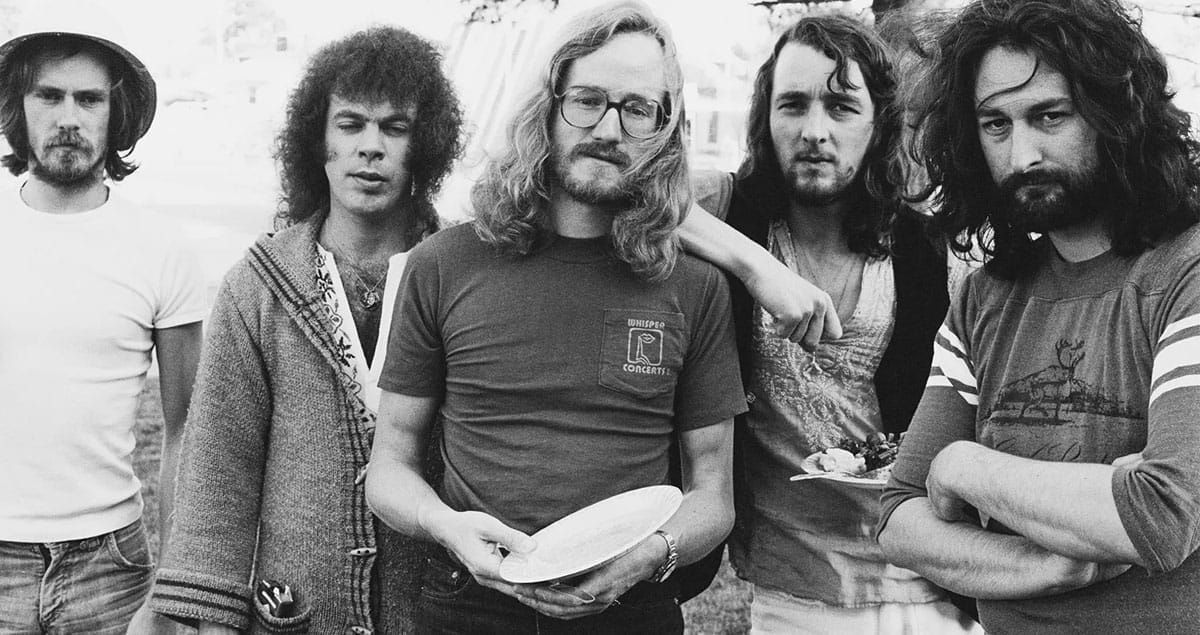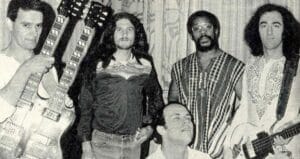Supertramp: Pioneers of Progressive Pop Rock
Supertramp was a British rock band formed in 1969 that blended progressive rock, art rock, and pop rock to create an enduring sound characterized by clever lyrics, intricate arrangements, and catchy melodies. Known for their distinctive sound, which combined piano, saxophone, and electric guitar, Supertramp achieved global success in the 1970s and 1980s with albums like Crime of the Century and Breakfast in America.
1. Formation and Early Years (1969-1973)
1.1 The Birth of Supertramp
- Supertramp was founded in 1969 by Rick Davies and Roger Hodgson, two schoolmates from England who were drawn to the idea of creating a unique blend of rock music that incorporated both progressive rock influences and more radio-friendly elements.
- The band went through several lineup changes in its early years and initially struggled to find commercial success. They released their self-titled debut album in 1970, which had limited impact but laid the groundwork for their later success.
1.2 Transition to Success: Crime of the Century (1974)
- After several lineup changes, Supertramp found success with their third album, Crime of the Century (1974). This marked a turning point in their career, with the band’s signature sound starting to take shape: a combination of melodic pop, rock, and progressive arrangements.
- The album was a critical and commercial success, and it was the first to feature the distinct voice and songwriting contributions of Roger Hodgson, alongside the more keyboard-driven compositions of Rick Davies. The album’s most famous tracks, Dreamer and Bloody Well Right, became radio staples.
- Key Tracks:
- Dreamer
- Bloody Well Right
- Rudy
2. Supertramp’s Peak Years (1975-1982)
2.1 Crisis? What Crisis? (1975) – A Continued Success
- Building on the momentum of Crime of the Century, Supertramp’s next album, Crisis? What Crisis? (1975), continued their commercial success. The album is often noted for its social commentary and introspective themes, which are wrapped in catchy melodies and complex arrangements.
- Although the album didn’t produce as many hit singles as its predecessor, it showed the band’s ability to balance progressive rock with accessible pop, further cementing their distinctive sound.
- Key Tracks:
- Lady Madonna
- Ain’t Nobody But Me
2.2 Even in the Quietest Moments… (1977) – A Refined Sound
- Even in the Quietest Moments… (1977) marked a period of mature refinement in Supertramp’s sound. The album included the hit single Give a Little Bit, which remains one of their most recognizable songs. The band’s mix of pop accessibility with progressive rock sophistication was at its peak here.
- The album showcased a more polished production, blending soft rock and symphonic elements. It is considered one of their most balanced albums.
- Key Tracks:
- Give a Little Bit
- Lover Boy
- Even in the Quietest Moments
2.3 Breakfast in America (1979) – The Ultimate Breakthrough
- Released in 1979, Breakfast in America (1979) became Supertramp’s most commercially successful album, turning them into global superstars. The album is a perfect blend of catchy pop rock with a progressive edge, featuring impeccable production and memorable, radio-friendly hits.
- The album’s major singles, The Logical Song and Breakfast in America, dominated the airwaves and remain iconic tracks. The album reached multi-platinum status and is still considered one of the band’s best works.
- Key Tracks:
- The Logical Song
- Breakfast in America
- Goodbye Stranger
- Take the Long Way Home
3. Decline and Reformation (1982-1990s)
3.1 Famous Last Words… (1982) – The End of an Era
- Famous Last Words… (1982) marked a significant turning point for the band. While still successful, the album’s more experimental direction was not as commercially successful as its predecessors.
- Following the release of Famous Last Words…, Roger Hodgson left the band to pursue a solo career, which led to a shift in the band’s dynamics and sound.
- Key Tracks:
- It’s Raining Again
- My Kind of Lady
3.2 Post-Hodgson Era: Continued Evolution
- After Hodgson’s departure, Supertramp continued to record and tour, with Rick Davies becoming the central figure. The band’s sound evolved further, incorporating new wave and synth-driven elements, though they never quite regained the level of success they had during their peak years.
- Key Albums from this era include Brother Where You Bound (1985) and Some Things Never Change (1997), but these albums did not have the same impact as their earlier works.
4. Supertramp’s Legacy and Influence
4.1 Influence on Music
- Supertramp’s ability to combine pop rock melodies with progressive rock complexity set them apart in the 1970s and 1980s. Their music influenced a wide range of artists, from rock to synthpop and new wave.
- Their conceptual albums and strong lyrical content were often compared to other progressive rock bands like Genesis, Yes, and Pink Floyd, though Supertramp retained a more accessible and radio-friendly sound.
4.2 Lasting Popularity
- Supertramp remains a popular nostalgic act for fans of 70s and 80s rock, and their music continues to be featured in classic rock and retro playlists. Songs like The Logical Song, Give a Little Bit, and Take the Long Way Home have become staples of the classic rock canon.
- The band’s influence can be heard in the music of bands like Coldplay, Keane, and Marillion, who share a similar balance of melodic pop and intellectual themes.
5. Supertramp’s Discography Overview
Studio Albums:
- Supertramp (1970)
- Indelibly Stamped (1971)
- Crime of the Century (1974)
- Crisis? What Crisis? (1975)
- Even in the Quietest Moments… (1977)
- Breakfast in America (1979)
- Famous Last Words… (1982)
- Brother Where You Bound (1985)
- Some Things Never Change (1997)
- Supertramp 70-10 (2010)
Live Albums:
- Paris (1980)
- Live in Paris 1979 (2003)
6. Conclusion: Supertramp’s Enduring Appeal
Supertramp’s unique blend of pop, rock, and progressive elements made them one of the most beloved bands of the 1970s and 1980s. Their memorable melodies, satirical lyrics, and sophisticated arrangements have left a lasting legacy.




